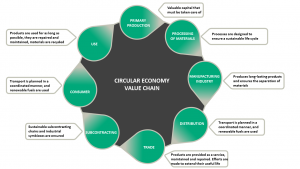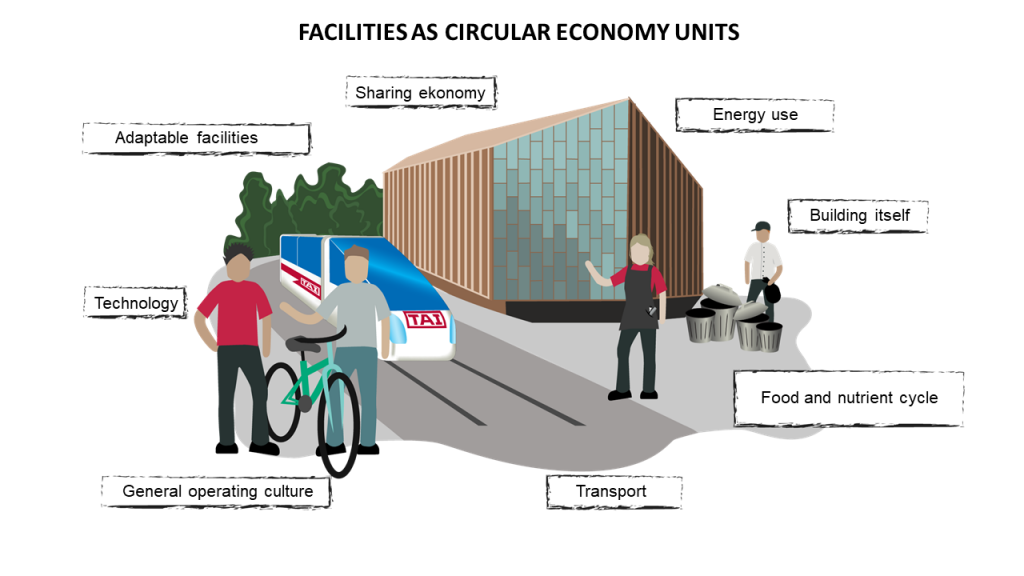The circular economy is a new mode or operation and economic model. Its key principles are sustainable use of natural resources and keeping them in circulation. The circular economy is strongly linked to the carbon footprint. It is one of the most essential means of reducing greenhouse gas emissions from production and consumption.
Currently, less than 9% of our economy operates in accordance with the principles of circular economy. Many activities continue to be carried out according to a linear model. It means using natural resources as raw materials for products, using the products and, after use, discarding them as waste.
 In addition to reducing greenhouse gas emissions, the circular economy can also reduce biodiversity loss. In a circular economy, virgin raw materials are used and processed to a lesser extent than in a linear economy. It also reduces the loading of water bodies.
In addition to reducing greenhouse gas emissions, the circular economy can also reduce biodiversity loss. In a circular economy, virgin raw materials are used and processed to a lesser extent than in a linear economy. It also reduces the loading of water bodies.
Circular economy business models
Circular economy business models can be very profitable for companies. The circular economy is estimated to create up to 700,000 new jobs in the EU by 2030. Many TAI students are very likely to work in companies operating according to circular economy business models. This should also be taken into account in teaching.
Circular economy business models include:
- Renewability: Production of renewable materials and use or production of renewable energy. For example, ABM Composite produces bio-based and biodegradable plastics.
- Sharing platforms: sharing of resources.
For example, ResQ Club sells surplus food from restaurants to consumers. - Product as a service: purchasing, renting or leasing performance capacity.
For example, Lindström provides workwear as a service and takes care of the entire life cycle of products. - Extending product life cycles: long-lasting products, focus on quality, less products sold, higher prices.
For example, Valtra overhauls tractor batteries to extend their useful life. - Resource efficiency and recycling: utilisation of side streams, environmental friendliness of materials and more efficient production.
For example, Pure Waste manufactures clothes, yarns and fabrics from 100% recycled materials.
Promoting a circular economy at TAI
 The location of the school buildings and the access routes in their vicinity guide the choices made by those arriving at the building. It is, therefore, important to consider whether the building encourages people to select a car, walking, cycling or public transport. Sustainable mobility in line with the circular economy can be promoted by improving route maintenance, providing good bicycle parking and changing room facilities, and by providing information on the access to public transport and its routes and timetables. It is also a good idea to assign parking areas near school buildings for shared vehicles, such as city bikes and electric scooters.
The location of the school buildings and the access routes in their vicinity guide the choices made by those arriving at the building. It is, therefore, important to consider whether the building encourages people to select a car, walking, cycling or public transport. Sustainable mobility in line with the circular economy can be promoted by improving route maintenance, providing good bicycle parking and changing room facilities, and by providing information on the access to public transport and its routes and timetables. It is also a good idea to assign parking areas near school buildings for shared vehicles, such as city bikes and electric scooters.
School catering services observe the circular economy by favouring food produced locally, offering products of animal origin in moderation, reducing food waste and selling or donating surplus food. For students, the most important way of promoting the circular economy of the food chain is to eat school food. Less waste will be generated if the kitchen can better predict the number of eaters. In addition, school food is nutritionally well-balanced, climate-friendly and free of charge for those in compulsory education. In addition, the eaters do not need to leave the school building to get it.
In teaching, the circular economy is manifested, for example, as material efficiency, minimising the amount of waste, sorting the generated waste and avoiding new purchases. Many materials used in teaching can be reused and acquired second-hand. Good examples of operating in accordance with the principles of circular economy at TAI include medical supplies received from TYKS used in the social and health care sector, the recycled computers used in basic education and donating hair waste from the hairdressing sector as raw material for oil spill mats.
